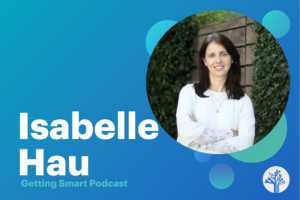Two Key Points for Understanding Imagination in Education

By Gillian Judson
It is astonishing to me that we rarely talk about imagination in education.
At the same time, I do have a sense why this is the case: from at least Plato’s time, we’ve associated imagination with the irrational; imagination is “fantasy” and “make believe.”
Imagination is misunderstood.
Many teachers equate “imagination” with early learning. This couldn’t be farther from the truth. Others assume discussion of imagination in education refers to an arts-infused curriculum. Again: not true. Others consider imagination as a “frill”—who has time for “flights of fancy” when the contact we have with students is so limited and curricular demands are so great? The idea that imagination is at odds with rigorous, academic learning is a dangerous misconception.
These beliefs are deeply rooted and, I think, why many teachers don’t spend focused pedagogical time thinking about how to engage their students’ imaginations in learning.
And herein lies a great contradiction.
I have never actually met anyone who believes that being imaginative is a useless quality or that the imagination is a useless feature of the human mind. In reality, we constantly seem to acknowledge its importance. We want it for our kids—we admire it in others.
And yet we neglect it in schools.
Imagination Understood?
I like psychologist Lev Vygotsky’s take on imagination. He said that imagination is a “higher psychological function connected to emotion and to all intellectual activity.” Two quick quotes that can help us understand imagination:
“…imagination is as necessary in geometry as it is in poetry. Everything that requires artistic transformation of reality, everything that is connected with interpretation and construction of something new, requires the indispensable participation of imagination”
&
“…imagination, as the basis of all creative activity, is an important component of absolutely all aspects of cultural life, enabling artistic, scientific, and technical creation alike”
Similarly, educational philosopher Kieran Egan situates the imagination at the heart of all learning—his work constantly shows how imagination is one of the great workhorses of all learning. The imagination represents the ability to envision the possible in all things. The imagination is something that we can educate; we can enrich this capacity in our students as they learn all aspects of the curriculum.
The theory of Imaginative Education exemplifies specific ways to engage the emotions and imaginations in learning. This is Kieran Egan’s demonstration of the practical ways that all teachers can tap into the generative power of imagination in all contexts.
Two Key Points for Educators
1. The imagination plays a role in all learning—all people, all places.
2. There are particular cognitive tools we employ as imaginative beings to make sense of the world. These are tools educators can employ to make what they are teaching meaningful, memorable and inspiring.
The tools in the toolkit of the imaginative educator include such things as anomalies, narrative, agency, humanization, mystery, wonder, story-form, imagery, rhythm & pattern, humour, extremes and limits of reality and many more.
Take Action
My concern is that teachers will continue on their dedicated, hard-working way, without a real sense of the potential of imagination to increase their student learning or the practical strategies they can employ to better teach the concepts they are passionate about.
My hope is that imagination can be understood.
Be part of a movement to acknowledge the value of imagination for learning; acknowledge the need to make learning as engaging as possible for all students. Easy ways to get involved:
- Share this post on social media if you want to start conversations about imagination in education.
- Leave a comment if you are also interested in/working toward situating imagination more centrally in education.
- Forward this post to any teachers you think could benefit from learning about strategies for engaging students in learning, or who could use some support for their imagination-focused teaching!
For more, see:
- Expanding & Enriching Relationships in Place-Based Education
- Three Toolkits To Help Maximize Student Learning & Engagement
- The Danger of Designing Lessons for Thinkers
Gillian Judson is a researcher, teacher and advocate of the role of imagination in all learning. Follow her on Twitter: @perfinker
Stay in-the-know with all things EdTech and innovations in learning by signing up to receive the weekly Smart Update.







0 Comments
Leave a Comment
Your email address will not be published. All fields are required.